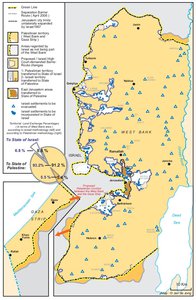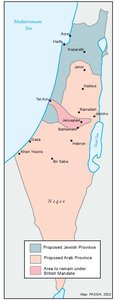THE MORRISON-GRADY PARTITIONED TRUSTEESHIP PLAN, 1946
Map Details
WWII left in its wake destruction on so massive a scale that it was to upset forever the global alliances and regional power strategies which preceded it. By the end of the war, some 60 million people had been killed, among them nearly six million European Jews, who had been systematically exterminated by the Nazis. Some 14 million ‘displaced persons’ were strewn across an economically shattered continent. During the six years of the war, only a tiny number of Jews were rescued - efforts to help were weak, late and ineffectual. This was in part a result of the fact that news of the systematic killings took until 1941 to emerge and was even then not taken sufficiently seriously by the Allied Powers or the Zionists until 1942. But even after news of the Holocaust reached them, responses were often detached and even cynical. In 1943, the Allied Powers convened a conference to discuss the issue, but neither Britain nor the US offered to open their doors to the Jewish refugees. The Zionists themselves failed to put aside their internal divisions and ideological concerns in time to react effectively. During the war approximately 50,000 Jewish refugees reached Palestine. At its end roughly one million remained destitute in Europe. The catastrophe demanded an immediate response from the victorious Great Powers, Britain and the US, and the plight of Europe’s remaining Jews stood foremost in the eyes of the world. Nonetheless, the US and Britain refused to relax their immigration laws and no initiative was proffered for the resettling of Jewish refugees in Europe. A new power balance that solidified in the closing months of WWII saw the lines of the coming Cold War tentatively drawn. Both the US and Britain witnessed a change in leadership in 1945 and within months of the German surrender, British Prime Minister Attlee was seeking US involvement in the Palestine Question. Attlee, aware of his predecessors’ failures in reaching a solution, knew rising pro-Zionist sentiment in the US and the crowded camps across Europe made the internationalization of the problem not only unavoidable, but also preferable. US involvement, ostensibly in favor of the Zionists, was quickened by a geopolitical race for influence that had already begun. The USSR’s anti-Zionist policy was bound to result in Arab sympathy and the prospect of Soviet dominance in the oil-rich region was troubling to the US. In November 1945, an Anglo-American Committee of Inquiry was formed to examine the Jewish refugee problem. At US insistence, its terms of reference limited it to viewing resettlement in Palestine as the sole option. The Committee recommended issuing 100,000 immigration certificates immediately and removing all restrictions on land transfer in Palestine. No solution to the issue of sovereignty was found and instead the Committee suggested a long-term UN trusteeship. The Arabs were horrified, while Britain deemed the plan unworkable in both the short and long-term. Three weeks later, British Deputy Prime Minister Herbert Morrison and US Ambassador Henry Grady began constructing an amended, alternative solution. The plan incorporated the Zionist-US demand for 100,000 immigrants immediately and the trusteeship premise, but envisioned a division of Jewish and Arab provinces, leaving open - they contended - the option of an eventual binational state or partition of Palestine. Zionist and US rejection consigned the plan to failure almost immediately and subsequent US public statements critical of Britain and supportive of the WZO signaled the end of the Anglo-American approach.
Related Maps
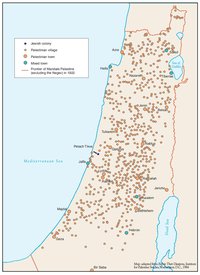
OTTOMAN PALESTINE, 1878
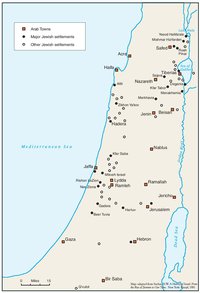
ARAB TOWNS AND JEWISH SETTLEMENTS IN PALESTINE, 1881-1914
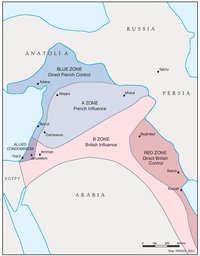
THE SYKES-PICOT AGREEMENT, 1916
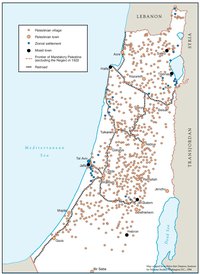
THE BEGINNING OF THE BRITISH MANDATE, 1920
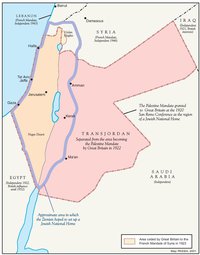
PALESTINE UNDER THE BRITISH MANDATE
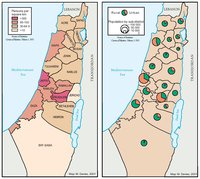
THE DEMOGRAPHY OF PALESTINE, 1931
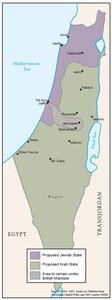
THE PEEL COMMISSION PARTITION PROPOSAL, 1937
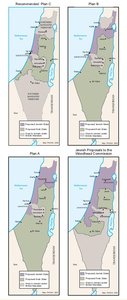
THE WOODHEAD COMMISSION PARTITION PROPOSALS, 1938
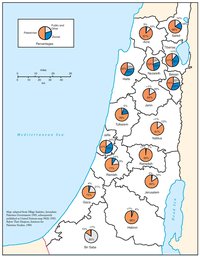
PALESTINIAN AND ZIONIST LANDOWNERSHIP BY SUB-DISTRICT, 1945
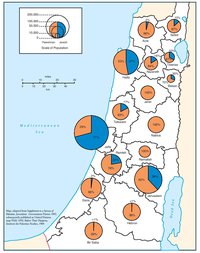
POPULATION OF PALESTINE BY SUB-DISTRICT, 1946
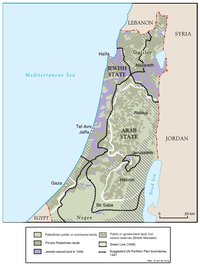
LAND OWNERSHIP IN PALESTINE, 1948
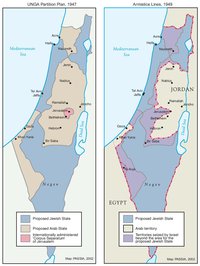
THE UNGA PARTITION PLAN, 1947 – THE 1948 WAR & THE 1949 ARMISTICE LINES
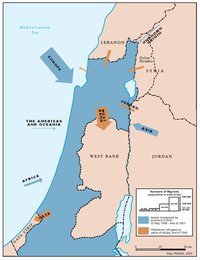
POPULATION MOVEMENTS, 1948-1951
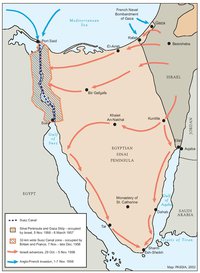
THE SUEZ WAR, 1956
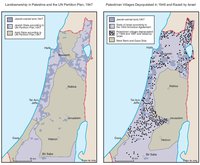
LAND OWNERSHIP IN PALESTINE AND THE UN PARTITION PLAN - PALESTINIAN DEPOPULATED AND DESTROYED VILLAGES, 1948-1949
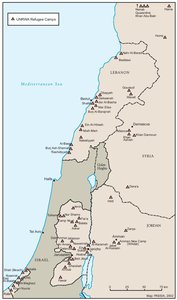
THE PALESTINIAN DIASPORA, 1958
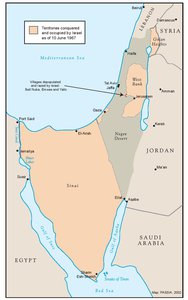
THE NEAR EAST AFTER THE JUNE 1967 WAR
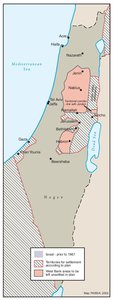
THE ALLON PLAN, JUNE 1967
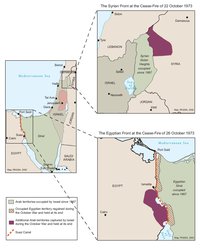
THE OCTOBER WAR, 1973
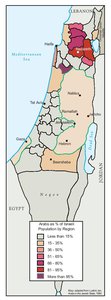
THE PALESTINIANS INSIDE ISRAEL, 1977
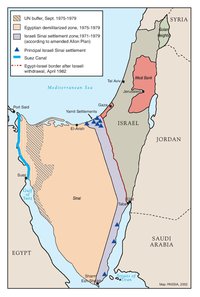
THE CAMP DAVID ACCORDS, 1978-1979
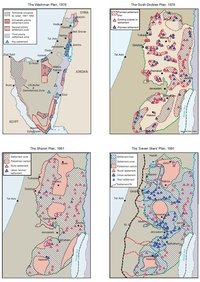
ISRAELI SETTLEMENT MASTER PLANS, 1976-1991
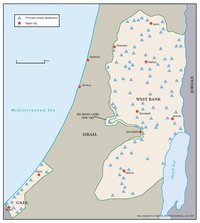
THE 1991 MADRID PEACE CONFERENCE & ISRAELI SETTLEMENTS
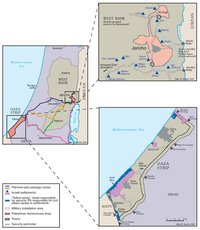
GAZA-JERICHO (OSLO I) AGREEMENT, CAIRO, 4 MAY 1994
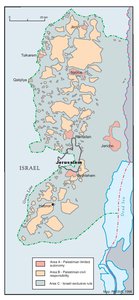
INTERIM (OSLO II) AGREEMENT, TABA, 28 SEPTEMBER 1995
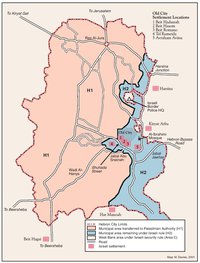
HEBRON PROTOCOL, 15 JANUARY 1997
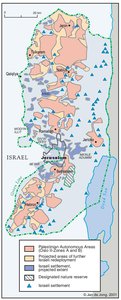
WYE RIVER MEMORANDUM, 23 OCTOBER 1998
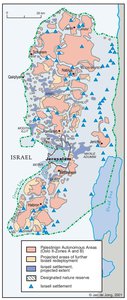
SHARM ESH-SHEIKH AGREEMENT, 4 SEPTEMBER 1999
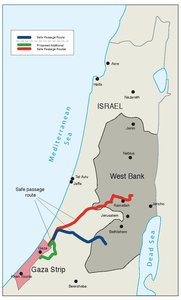
PROTOCOL CONCERNING SAFE PASSAGE BETWEEN THE WEST BANK AND THE GAZA STRIP, 5 OCTOBER 1999
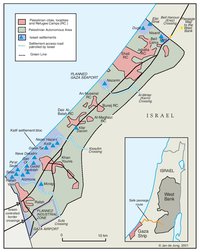
GAZA, 2000
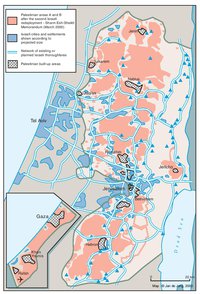
WEST BANK AND GAZA STRIP, MARCH 2000
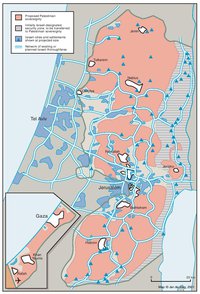
CAMP DAVID PROJECTION, JULY 2000
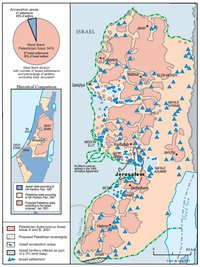
TABA TALKS PROJECTION, JANUARY 2001
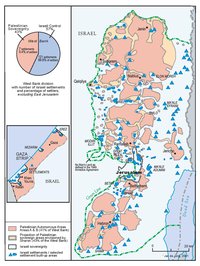
THE SHARON PROPOSAL, SPRING 2001
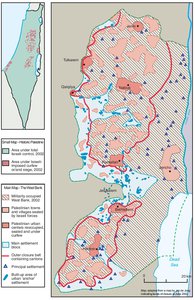
THE REINVASION OF THE PALESTINIAN TERRITORIES, 2001-2002
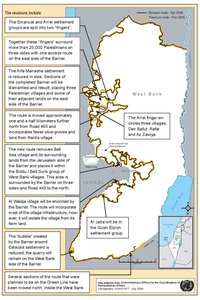
THE ROAD MAP, 2003
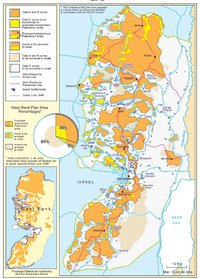
THE GENEVA INITIATIVE AND ACCORD, 2003
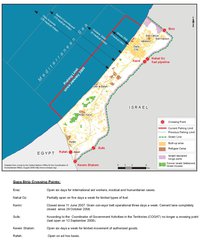
THE ISRAELI DISENGAGEMENT PLAN, 2003-2005
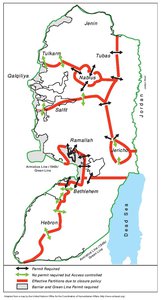
AGREED DOCUMENTS ON MOVEMENT AND ACCESS FROM AND TO GAZA, 2005
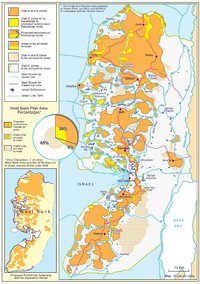
THE SETTLERS' PLAN FOR PALESTINIAN AUTONOMY, 2006
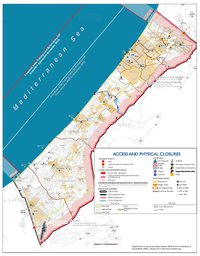
THE GAZA STRIP TODAY (2014)
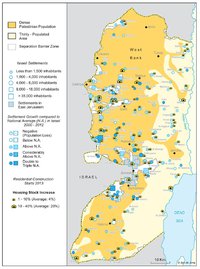
THE WEST BANK TODAY (2014)
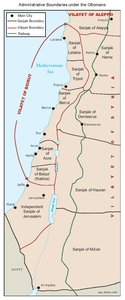
ADMINISTRATIVE BOUNDARIES
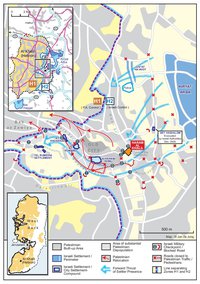
HEBRON
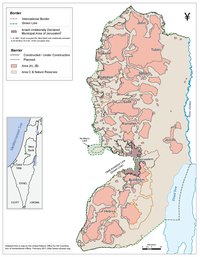
Area C
